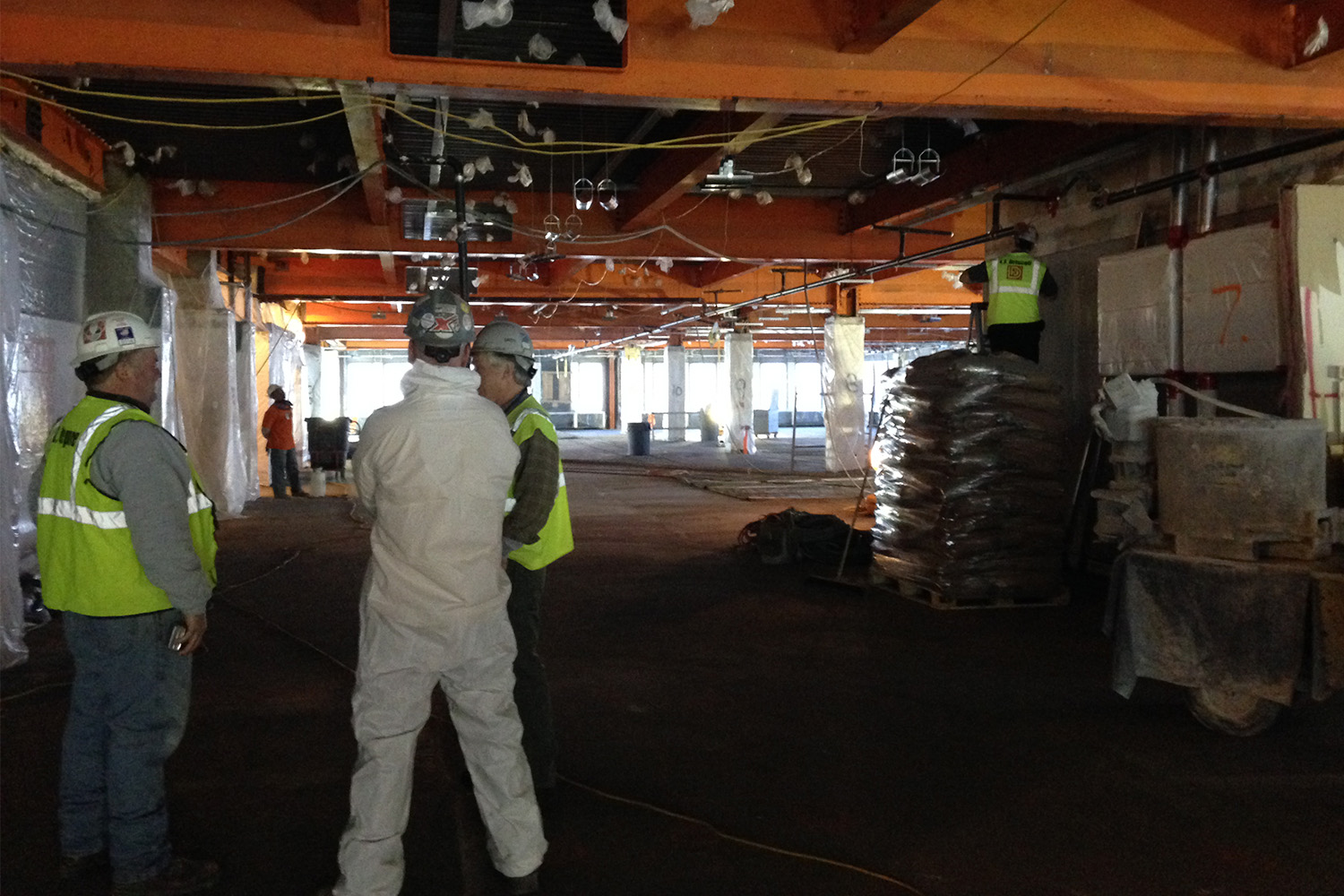Peter W. Rodino Federal Office Building: Getting from Design to Construction

The design phase ends, and now the construction phase begins
The transition between the design and construction of the Peter W. Rodino Federal Office Building has been gradual. The Design-Build-Bridging delivery method makes for an interesting discussion of where design ends and construction begins. The Bridging Design team, Dattner Architects, hands off the original concept and detailing to a Design-Build team, Tocci/Driscoll working with KlingStubbins, to finalize the documents and execute construction.
The handoffs are most evident on the curtainwall overclad system. Dattner Architects conceptualized and defined the design intent: The overclad serves a role in the overall building energy retrofit, allowing for insulation in the colder months and ventilation in warmer months. Dattner also polished the final appearance with transitional spaces, material interfaces, and quality.
After Tocci/Driscoll received the project award, KlingStubbins took over overclad design and detailing. Tocci/Driscoll, KlingStubbins, the installer (National Glass), and the fabricator (McMullen), further developed the system for the stamped construction drawings, keeping within the constraints of fabrication methods and tolerances without changing the intent.
The team defined:
- Glazing details, based on actual glass that will make up the curtainwall
- The interface between rooftop panels and the existing structure
- Window washing units, based on the rooftop track system and outside vendor
- Connection details, based on fabrication tolerances and the actual mechanical fastening system
- Panelization, based on fabrication and installation sequence
The model produced by KlingStubbins does not include all fabrication details, just the necessary spaces, placeholders, and tolerances required for fabrication. After completion of the Construction Documentation, the Revit model was turned over to McMullen, who added the actual fabrication detail.
Due to the nature of the project, the renovation of an existing building, as well as the project delivery method, Design-Build-Bridging, a constant flow of information, and collaborative design were needed to push this project forward. While the appearance of a system like the overclad was developed and decided upon early in the process, the development of the necessary details, and design and coordination of a complex element into existing infrastructure will carry far into the overall construction of the project.